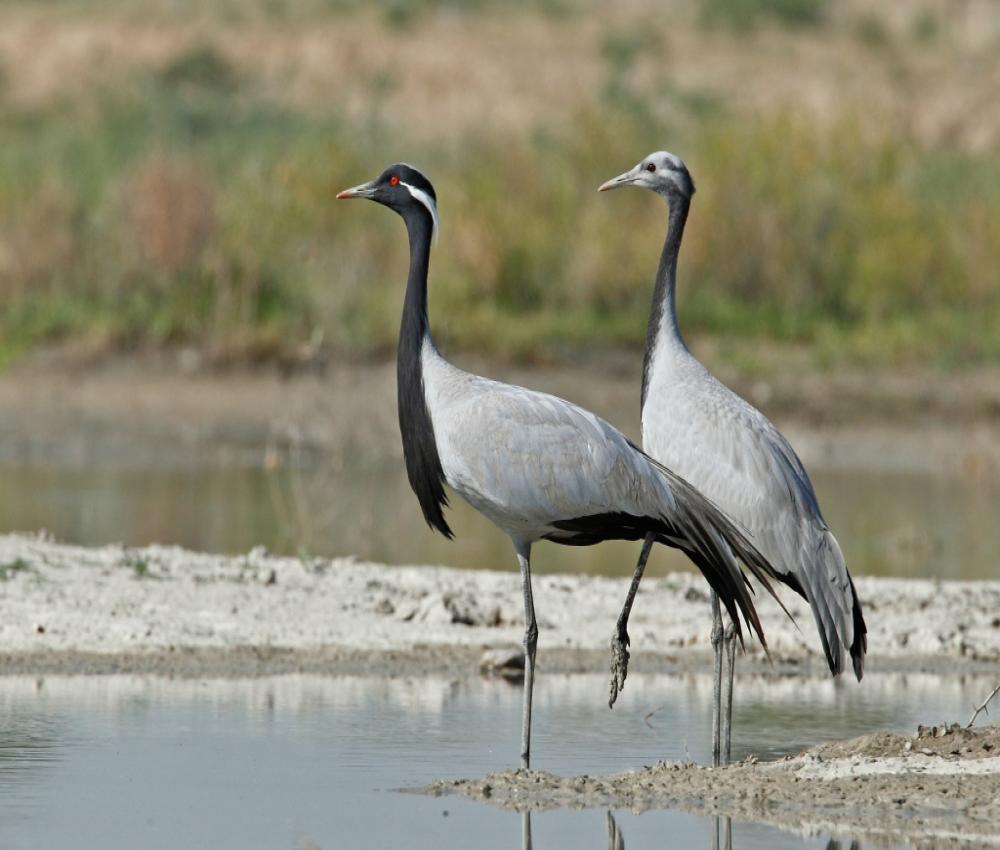Demoiselle crane: Red Data Book of Armenia

Cranes - Gruidae
Status. A rare migratory species of limited distribution and sharply decreasing population in Armenia. Listed in the IUCN Red List of Threatened Species (ver. 3.1) as Least Concern. According to IUCN criteria categorized as Vulnerable VU B1ab(iii)+2ab(iii).
Distribution. Africa, Eurasia from Spain to the Lake Baikal, Mongolia, Central Asia, Asia Minor, South Caucasus.
Distribution in Armenia. Occurs mostly in the central and northern parts of the country during the spring and autumn migrations, in flocks of 200–300 individuals. Stops over on arable lands and crop fields.
Habitats. Lives in stony semi–deserts with sparse herbage, foothill grasslands, crop fields, pastures and meadows.
Biological traits. Nestles on the ground in dry places, near the water sources (canals, lakes or swamps), often beside the settlements. Eggs are dark creamy with yellowish–brown spots, 2/clutch, size 81–94 mm. The brooding period is ca. 30 days. Having dried up, hatchlings can follow their parents.
Population size and its trends. The numbers have significantly fallen down in recent times. During the autumn and spring migrations cranes occur in flocks of 200–300 individuals which stop over mostly on crop fields of the Lake Sevan basin.
Major threats. In early spring birds can freeze over under sudden changes in weather conditions.
Conservation measures. It is essential to estimate population size during migrations and, in harsh conditions, to apply supplementary feeding.
Suggestions
 The Ministry of Environment sent a letter international partners to draw their attention to the real danger of environmental disasters as a result of Azerbaijan's large-scale aggression towards the territory of Armenia
The Ministry of Environment sent a letter international partners to draw their attention to the real danger of environmental disasters as a result of Azerbaijan's large-scale aggression towards the territory of Armenia
 Vicia pisiformis: Red Data Book of Armenia
Vicia pisiformis: Red Data Book of Armenia
 Vavilovia formosa: Red Data Book of Armenia
Vavilovia formosa: Red Data Book of Armenia
 Trigonella capitata: Red Data Book of Armenia
Trigonella capitata: Red Data Book of Armenia
 Trigonella astroides: Red Data Book of Armenia
Trigonella astroides: Red Data Book of Armenia












